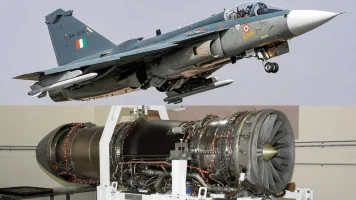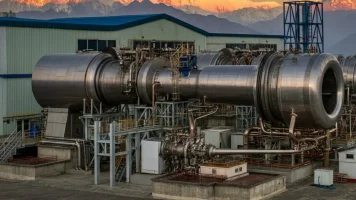- Views: 1K
- Replies: 15
India's Gas Turbine Research Establishment (GTRE) is making significant strides in bolstering the nation's aerospace capabilities with the near completion of its 130kN Twin Engine Test Bed Facility in Rajankunte, Bengaluru.
This state-of-the-art facility is poised to play a crucial role in the development of key engine projects, including the dry Kaveri engine and the engine for the Advanced Medium Combat Aircraft (AMCA).
Designed to accommodate engines with thrust levels up to 130kN, the new test bed facility provides a platform for rigorous testing and validation of high-performance jet engines.
Construction began in September 2023, following consultancy work in July of the same year, and is part of a broader initiative by the Defence Research and Development Organisation (DRDO) to strengthen India's self-reliance in aerospace technology.
The dry Kaveri engine, with a target thrust of around 46kN, stands to benefit significantly from this facility. Comprehensive ground testing will allow for fine-tuning the engine's performance, addressing previous technical challenges, and ensuring it meets the demanding requirements for military applications.
The facility will enable GTRE to conduct endurance tests, performance evaluations, and necessary modifications to achieve the desired thrust levels and reliability.
For the AMCA, India's ambitious fifth-generation fighter jet project, the Rajankunte test bed will be indispensable. The AMCA engine, expected to deliver around 110kN of thrust, will undergo extensive testing at the facility to ensure it can withstand the extreme conditions of combat, including high-altitude and supersonic performance.
The facility's capabilities will support the iterative development process, potentially reducing the time and cost associated with bringing the engine to production readiness.
The construction of this facility underscores India's strategic focus on indigenous defence production. It not only supports the Kaveri and AMCA programs but also paves the way for future engine development, reducing reliance on foreign technology and enhancing national security through technological sovereignty. The test bed will also serve as a hub for innovation, potentially attracting collaborations with private sector entities and international partners.
With the project expected to be fully operational by October 2025, GTRE is on track to significantly enhance India's capabilities in gas turbine technology. The facility will not only support current projects but also lay the foundation for long-term advancements in aerospace engineering. As India aims to become a key player in global defence manufacturing, facilities like the one at Rajankunte are essential for achieving these ambitious goals.




